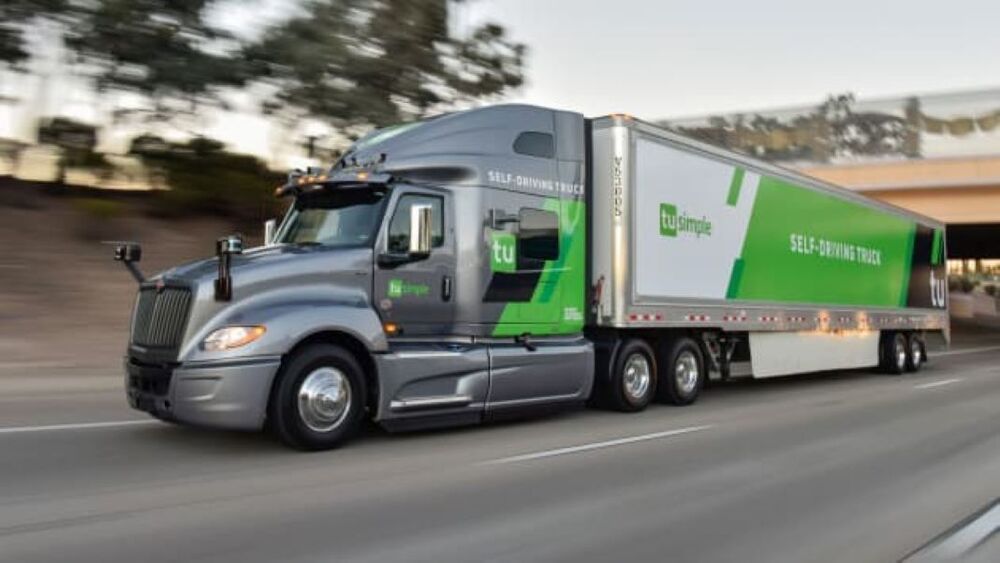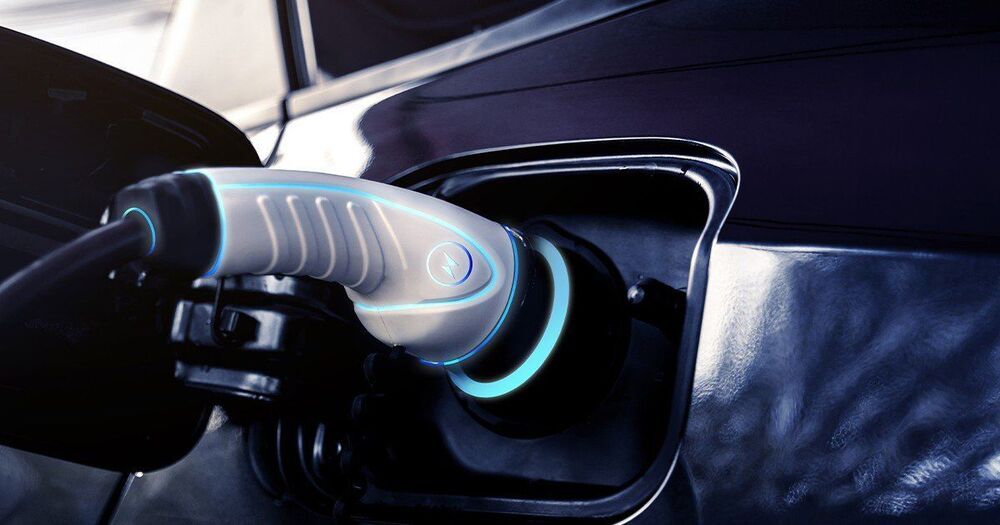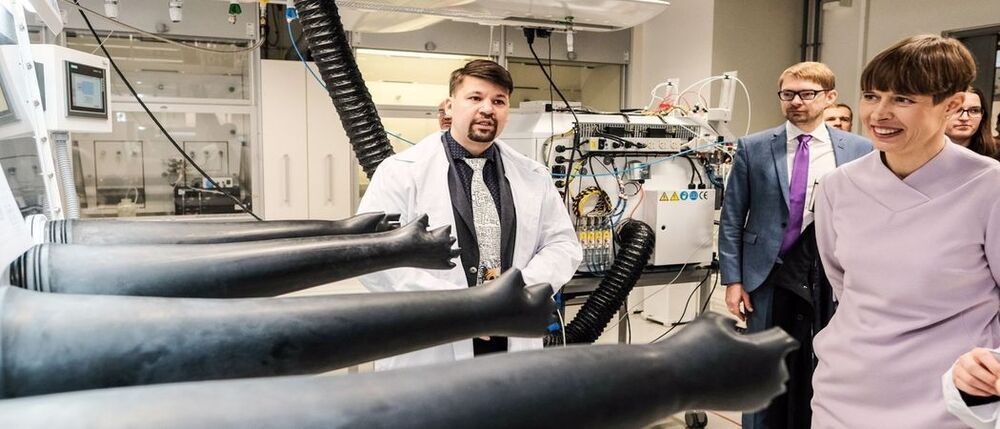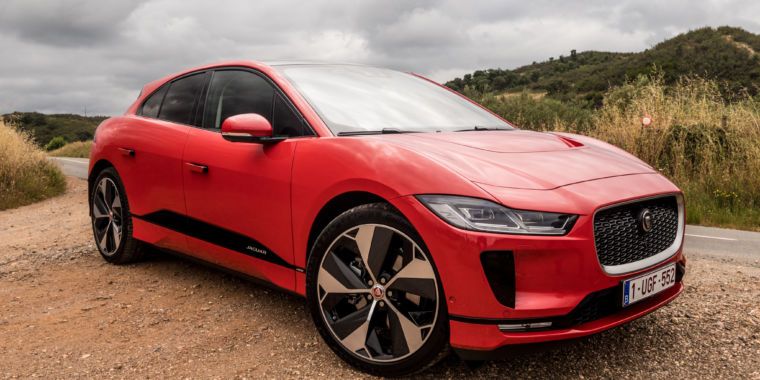Circa 2016
From driverless buses to an AI council worker called Amelia, municipal services are becoming increasingly automated. But what does that mean for the future of our cities – and the jobs market?


Self-driving cars are taking longer to come to market than many expected. In fact, it’s looking like they may be outpaced by pilotless planes and driverless trucks. A truck isn’t much different than a car, but self-driving technology is already coming in handy on long-haul trucking routes, as a recent cross-country trip showed.
Last month TuSimple, a transportation company focused on self-driving technology for heavy-duty trucks, shipped a truckload of watermelons from Arizona to Oklahoma using the truck’s autonomous system for over 80 percent of the journey. The starting point was Nogales, at Arizon’s southern end right on the border with Mexico. A human driver took the wheel for the first 60 miles or so, from Nogales to Tucson—but from there the truck went on auto-pilot, and not just for a little while. It drove itself all the way to Dallas, 950 miles to the east (there was a human safety driver on board the whole time, but not controlling the truck).
If you look at the most direct route, it’s pretty straightforward: there’s one fork where I-10 splits off and merges with I-20, but other than that, it’s straight on through ‘til morning. Literally, in this case; the truck drove the route in 14 hours and 6 minutes, as compared to the given estimate of the average time it takes a human to drive the same route—24 hours and 6 minutes.

Deep-learning expert weighs in on getting to AGI, assessing algorithmic intelligence, autonomous vehicles,” “Mark Ryan is a Data Science Manager at Intact Insurance and the author of the recently-released “Deep Learning with Structured Data”. He holds a Masters degree in Computer Science from the University of Toronto, and is interested in chatbots and natural language processing.

Harvard University researchers have made a breakthrough in battery tech: a long-lasting solid-state lithium battery.
“A lithium-metal battery is considered the holy grail for battery chemistry,” researcher Xin Li told the Harvard Gazette.
Strong, cheaper, faster: Most of today’s electric vehicles (EVs) are powered by lithium-ion batteries, the same type of battery you’ll find in your laptop or smartphone.

While the remaining supersonic contenders duke it out to bring faster jets to market, private jet operators are doing their best to address the business traveler’s appetite for speed with aircraft that are as close to the sound barrier as they can be without actually breaking it, which poses all kinds of environmental issues.
With the news that supersonic planemaker Aerion has unexpectedly folded, is the dream of a successor to Concorde running out of fuel?

Bye Aerospace’s eFlyer 800 is a clean-sheet design that will carry eight people, including one or two pilots. The 800 will have two motors, powered by a grid of electric cells across the airframe.
This is the third model in a lineup of electric planes from the Denver-based aerospace firm, but the first with two motors. The eFlyer 2 is a two-seater for professional flight training that was developed when the company launched in 2014, and the eFlyer 4, a four-seater for air taxi and advanced training, came later. Both models have more than 360 orders each.

Amazing: 3
The President of Estonia Kersti Kaljulaid at the Tartu University laboratory. Photo: Mattias Tammet / Office of the President of the Republic of Estonia.
As the world is running out of lithium, planet-friendlier batteries are waiting to hit the market. We are using up lithium, the essential metal in rechargeable batteries. Some experts estimate that there won’t be any lithium left by 2035, and some say that it may already disappear within four years. Who should lose sleep over this? Anyone with a smartphone, a laptop or an electric car. Without lithium, they would have to be plugged in at all times.
But it’s not just about comfort. Lithium also plays an important role in storing wind and solar energy, an increasingly important sector. Therefore, the world is in the midst of a battery revolution.

Kelly and photographer Carlton Ward Jr. are featured in the April issue of National Geographic magazine. The article provides a glimpse into the life of the Florida panther, whose population once dwindled to below two dozen but has since rebounded to more than 200. Still, serious risks remain. In the past few weeks alone, two more endangered animals were killed after being struck by vehicles. Those deaths highlight a problem — as well as a success story for the cat the Cherokee once called “Lord of the forest.”
To capture panthers on camera, Kelly and Ward first had to find them. That’s not an easy task on Florida’s sandy soil, which makes them hard to track. You have to find really fresh tracks, Kelly said.
“First things first is identifying the track and knowing if it’s a panther or not. And then the real trick is following it,” he said. “So because they go so far, like in any given night, a panther might walk oh, a couple of miles. Maybe more. To actually follow panther tracks to find the panther itself — it’s way harder than it is for any of those African animals. Way harder.”
